This is a general survey on the historical and modern presence of Freemasonry in countries located in Asia (including Armenia and Turkey).
| Part of a series on |
| Freemasonry |
|---|
 |
This is a general survey on the historical and modern presence of Freemasonry in countries located in Asia (including Armenia and Turkey).

The Grand Lodge of Armenia [1] is a national organization, supervising Freemasonry in Armenia. It was consecrated in 2002 by representatives of the Grand Lodge of the District of Columbia, the Grande Loge Nationale Française and the Grand Lodge of Russia.
The Grand Lodge of Armenia is recognised by the United Grand Lodge of England and is located in Yerevan. [2]
Freemasonry in China is allowed but recommended against participating in by the Chinese Communist Party.[ citation needed ]
The Grand Lodge of China is located on the island of Taiwan, and was founded in 1949. It has 11 lodges with 750 members and is recognised by the United Grand Lodge of England. [3] [4] [5]
Freemasonry was introduced to India in the 1730s by the English. The fraternity remained under the jurisdiction of the United Grand Lodge of England through the colonial era. An independent Grand Lodge of India was founded in 1961. As of February 2011, it has 370 lodges spread across India with more than 14,900 members and is recognised by UGLE. [3] [6]
The Confederation of United Grand Lodges of India was founded in 2001 and is recognised by the Grand Lodge of Belgium. [7] [8]
The first Persian contact with freemasonry dates back to the 19th century during the Qajar period. [9]
The Grand Lodge of Iran, established in 1969 in Tehran, existed in the country prior to the Islamic Revolution of 1979, hosted membership from various political figures, including former prime minister Jafar Sharif-Emami (who served as the lodge's grand master at one point [10] ), and branched to 43 Lodges and at least 1,035 members. Since the Revolution, Freemasonry has been banned in Iran; a "Grand Lodge of Iran in Exile" is currently established in Los Angeles, where the local Grand Lodge approved its practice in 1985. [11] [ unreliable source? ] [12]
The Grand Lodge of the State of Israel was founded in 1953, it has 53 active lodges with 1400 members and is recognised by the United Grand Lodge of England. [13]
Le Droit Humain also has an Israeli jurisdiction founded in 1989. [14]
Freemasonry in Japan first began with the opening of trade with foreign countries occasioned by Commodore Perry's Black Ships in 1866. Prior to World War II, several Grand Lodges had subordinate Lodges there, including those of England, Ireland, and Scotland. Most went dark as the war loomed. After World War II, the Grand Lodge of the Philippines charted new Lodges throughout the country. [15]
General MacArthur, commander of US forces occupying Japan, a mason himself, supported the creation of several Lodges. [16]
The Grand Lodge of Japan was founded in 1957, it has 18 lodges with 2500 members and is recognised by the United Grand Lodge of England. [3] [15] [17]
Le Droit Humain has a lodge in Tokyo, the lodge "Soleil Levant" founded in 2008 and working at the Ancient and Accepted Scottish Rite in French. [18]
In late 1907 and early 1908 a number of Freemasons then residing in Korea undertook to establish the first Masonic Lodge on the Peninsula. A Charter was issued by the Grand Lodge of Scotland on November 5, 1908, and the name Han Yang, one of the ancient names for the capital city, was chosen to designate the new Lodge. The members were initially merchants, miners, and missionaries from Lodge Hyogo and Osaka 498 in Japan; [15] occupations that represented most of the foreign population in what was then known as Chosun. [19] In addition to Lodge Han Yang, there are two other Scottish lodges on the Korean Peninsula: Lodge Pusan and Lodge Harry S. Truman #1727 [20] in Pyeongtaek (on the roll of the Grand Lodge of Scotland). In December 1978 a letter was sent to facilitate Truman Lodge, and began as such, "Sixteen Master Masons, all members of the US Uniformed services or US civilian component thereof, have petitioned Lodge Han Yang 1048 and Pusan Lodge 1675, for support for the formation of a lodge in or in the immediate vicinity of (US) Osan Air Base located in the city of Songtan Up some 45 miles south of Seoul. There are reportedly some 30 Brn. additionally, who have indicated a keen interest in the formation of the lodge and who will lend their support." Similarly, MacArthur Lodge (under the jurisdiction of the Most Worshipful Grand Lodge of the Philippines). MacArthur Lodge currently holds meetings on the United States military base located within Seoul. Furthermore, numerous Prince Hall Freemasonry Lodges from the MWPHGL of Washington and Jurisdiction (and other PHA Grand Lodges) meet on various United States military bases throughout the country, including II Corinthians #96 at USAG Yongsan in Seoul, Sprig of Acacia #93 at Camp Casey, and Billy G. Miller #43 (MWPHGL Oklahoma) at Camp Humphreys.
There are a number of different Grand Lodges and Grand Orients in Lebanon. [21] Irregular Grand Lodges include the King Solomon Grand Lodge of Lebanon , Sun Grand Lodge (SGL) ,Grand Orient de Canaan the Grande Loge Centrale du Liban, the Grande Loge de Cèdres, the Grand Orient Arabe, [22] and the Grande Loge Bet-El, all in the tradition of Continental Freemasonry.
There are also UGLE recognised lodges active in Lebanon operating under the Grand District of Lebanon, under the Grand Lodge of Scotland and two lodges under the Grand Lodge of the District of Columbia. [23]
On 24 October 2018, the Grand Lodge of New York created the independent Grand Lodge of the Free and Accepted Masons of Lebanon. [24]
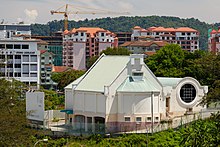
Freemasonry started in Malaysia 180 years ago and was first established on the island of Penang. There are freemason lodges in all states in Malaysia except Terengganu, Kelantan and Perlis. The largest freemason lodge in Malaysia is located in Bukit Jalil.

Freemasonry was introduced to Pakistan during the era of the British empire. Masonic organisations continued in the country until they were completely ousted in 1972 by Zulfiqar Ali Bhutto and again by Zia-ul-Haq in 1983.
The Sindh Wildlife Conservation building in Saddar, Karachi, served as a Masonic hall until it was taken over by the government. The Masonic Temple in Lahore, built in 1860, has been renamed to Mason Hall and is today used as a multi-purpose government building by the Government of Punjab.
Currently there are three different major jurisdictions existing in the Philippines, to wit:
(1) Gran Logia Soberana del Archipielago Filipino (GLSdAF)
Supremo Consejo del Grado 33°R∴E∴A∴yA∴ del Gran Oriente de Filipinas
Website: https://granlogiasoberanaph.com/
Address: RIZAL MASONIC TEMPLE
1316 Cavite St. Tondo, Manila, Philippines
Brief History of Gran Logia Soberana del Archipielago Filipino
On January 12, 1889, the Hispanico-Filipino Association was inaugurated in Madrid. The association was headed by the illustrious Grand Master Miguel Morayta and was composed of distinguished Spanish and Filipino Masons. The primary objective of the association was to fight for reforms in the Philippines, inspired by the Masonic principles of liberty, equality, and fraternity. According to pages 215-216 of the Master Mason's ritual, 1906 Edition, of the Ancient and Accepted Scottish Rite, Ohras Masonicas Oficiales, Volume III, the Grande Oriente Español established several lodges in the Philippines in 1889. However, these lodges were forced to operate in secrecy due to the power of the friars. In 1892, the Nilad Lodge in Manila was issued a charter by the Grande Oriente Español and several other workshops were established shortly thereafter. By the end of 1895, the Philippines had twenty-four lodges, a triangle, and a chamber of Knights of Kadosh. Unfortunately, the revolution that began in 1896 and ended with the United States taking control of the islands led to the dissolution of nearly all the lodges due to persecution and suffering. Despite this, the Modestia Lodge was able to survive and continue the Spanish Masonic tradition in the Philippines. Three lodges, one triangle, and a Rose Croix Chapter operate in the Philippines under the Grande Oriente Español. The Grand Orient of France and the Grand Lodge of California also have lodges in Manila, but the work of the lodges of the Grande Oriente Español soon lead to the development of Masonic doctrines throughout the country.
Organization of the First Grand Logia Regional of the Philippines
As per the esteemed Constitution of the Gran Logia Soberana del Archipelago Filipino, it is stated that the first Regional Grand Lodge of the Philippines was organized in June 1887. Ill.:. and Pot.:. Bro.:. Miguel Morayta, 33°, was the Assistant Grand Master and Acting Grand Master of the Spanish Symbolic Masonry of the Sovereign Grand Symbolic Lodges, under the auspices of the Gran Oriente de España. Later, on January 9, 1889, the organization took the title of Grande Oriente Español.
(2) Grand Lodge of the Philippines
(3) Gran Logia Nacional de Filipinas (Supremo Consejo del Grado 33 para Filipinas). https://glnf.ph/historia/
The latter is solely practicing the original landmarks of the Ancient and Accepted Scottish Rites (AASR); comprising with a none-ladderized 33 degrees.
The Grand Lodge of the Philippines was founded in 1912, it has 360 lodges with 16 500 members and is recognised by the United Grand Lodge of England. [3] [4] It had a pivotal role in the reestablishment of Freemasonry in Japan after World War II. [15]
The Filipino Masons Gran Logia Nacional de Filipinas (National Grand Lodge of the Philippines) under the Supremo Consejo del Grado 33° para Filipinas is a member of International Confederation of United Grand Lodges (https://www.acaciamagazine.org/html/icucgl) founded by Timoteo Paez. The Supremo Consejo del Grado 33 para Filipinas (first in the far east) was incorporated on July 4, 1924, and proclaimed on December 30 with Timoteo Paez as Soverano Gran Commendador. It claimed jurisdiction over 27 Blue Lodges, one Lodge of Perfection, one Chapter Rosa Cruz, one Council of Kadosh and the corresponding Grand Consistory.
It cannot be doubted that Filipino Masons are always united in any patriotic move. In many instances, they have shown their common interest for nationalism, they have worked harmoniously for the betterment and aggrandizement of their country, which our national hero Jose P. Rizal, called "The Pearl of the Orient". In thirty seven revolutions against the foreign yoke, Filipinos fought as one single person. In our last struggle for freedom which the benevolent Americans had generously returned to us on July 4, 1946, we were united as ever.
Masonically, Filipino Masons whether belonging to Gran Logia Nacional de Filipinas or to the Grand Lodge of Philippines have common aspirations; ideal and spiritual love for their country not found nor may be expected from any alien who camr to the Philippines for fortune's sake. <ref; History of Freemasonry in the Philippines, Logia Magdalo-General Emilio Aguinaldo, Gran Logia Nacional de Filipinas, Supremo Consejo del Grado 33° Para Filipinas (undated pamphlet)
Freemasonry was introduced in Ceylon by the British in the early 1800s. Currently there are ten English Lodges, two Scottish Lodges and four Irish Lodges in Sri Lanka. Most are based at the Victoria Masonic Temple at Galle Face, Colombo [25] while others are based at the Kandy Masonic Temple in Kandy; the New Masonic Temple in Nuwara Eliya and the Masonic Temple of Kurunegala.[ citation needed ]
After several rocky starts, Lodge St John (Scottish Constitution) was founded in Bangkok on January 24, 1911. One century later there are lodges from the United Grand Lodge of England, Grand Lodge of Ireland, Grand Lodge of Scotland, Prince Hall Grand Lodge of Delaware, Grand Orient of the Netherlands, National Grand Lodge of France (GLNF) and the Grand Lodge of France (GLdF). Lodges from GLdF are not recognized by the other lodges in the kingdom. [26] ]

Chula Lodge 9745 E.C was the first UGLE. [2] English Lodge consecrated in Thailand. Chula Lodge meets in Bangkok four times per year and as of 2014 there were two additional English lodges meeting regularly in Phuket and Pattaya. Chula Lodge’s workings place great emphasis on the three Great Principles of Freemasonry; Brotherly Love, Relief and Truth and their meaning in the search for the missing secrets of a Master Mason.
In Turkey Freemasonry was introduced by foreign merchants in the eighteenth century (1721) and was outlawed by Mahmud I in 1748, although it slowly came back and Freemasons were exiled as part of a crackdown on the Bektashis in 1826. [27]
A Grand Orient was formed in 1909. Freemasonry was suppressed from 1935 to 1948. [27]
A schism occurred in 1964, with a small group of freemasons creating the Grand Lodge of Liberal Freemasons of Turkey , [28] which later attached itself to the Grand Orient de France [29] [30]

Freemasonry or Masonry refers to fraternal organisations that trace their origins to the local guilds of stonemasons that, from the end of the 14th century, regulated the qualifications of stonemasons and their interaction with authorities and clients. Modern Freemasonry broadly consists of two main recognition groups: Regular Freemasonry, which insists that a volume of scripture be open in a working lodge, that every member professes belief in a Supreme Being, that no women be admitted, and that the discussion of religion and politics do not take place within the lodge; and Continental Freemasonry, which consists of the jurisdictions that have removed some, or all, of these restrictions.
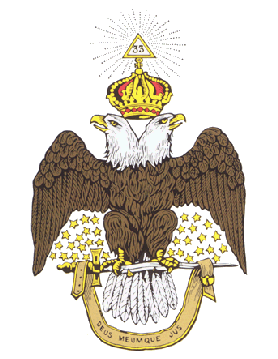
The Ancient and Accepted Scottish Rite of Freemasonry is a full-fledged Rite within the broader context of Freemasonry. It is the most widely practiced Rite in the world, spanning from the Blue Lodge level, and is sometimes designated as a concordant body due to its relationship with the degrees of Symbolic (Craft) Freemasonry. In contrast to being an appendant body, the Scottish Rite operates as a complete Rite in itself. Its structure includes the first three degrees, administered by various Masonic organizations or bodies. Each such body is governed by its own central authority. In the Scottish Rite, the central authority consists of a Grand Lodge overseeing the 1st to 3rd degrees, and a Supreme Council overseeing the 4th to 33rd degrees. The Droit Humain is an exception, as it maintains a consistent central authority from the 1st to the 33rd degree.
In Freemasonry, regularity is one of the factors by which individual Grand Lodges judge whether to recognise one another for the purposes of allowing formal interaction at the Grand Lodge level and visitation by members of other jurisdictions. Each individual Grand Lodge determines which other Grand Lodges it considers Regular.

The Grand Orient de France (GODF) is the oldest and largest of several Freemasonic organizations based in France and is the oldest in Continental Europe. The Grand Orient de France is generally regarded as the "mother lodge" of Continental Freemasonry.
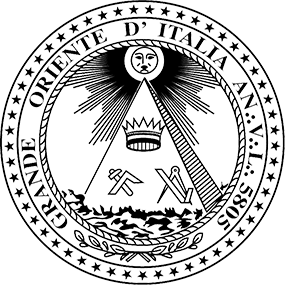
The Grand Orient of Italy (GOI) is an Italian masonic grand lodge founded in 1805; the viceroy Eugene of Beauharnais was instrumental in its establishment. It was based at the Palazzo Giustiniani, Rome, Italy from 1901 until 1985 and is now located at the Villa del Vascello. Its current Grand Master is Italian journalist Stefano Bisi.
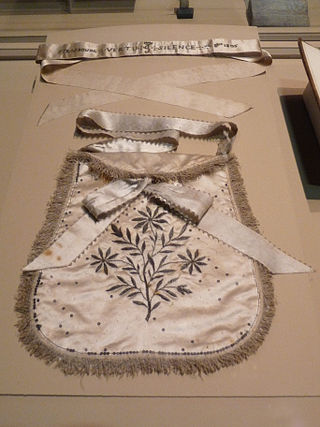
Freemasonry has had a complex relationship with women for centuries. A few women were involved in Freemasonry before the 18th century, despite de jure prohibitions in the Premier Grand Lodge of England.
The International Secretariat of the Masonic Adogmatic Powers (ISMAP) was an international organization of Masonic jurisdictions of masonic lodges. The jurisdictions involved are considered irregular by the United Grand Lodge of England (UGLE) and most other Anglo-Saxon Grand Lodges, because they accept women, or do not require Masons to have a belief in a Supreme Being. Its members merged back into CLIPSAS in the early 2010s.
Continental Freemasonry, otherwise known as Liberal Freemasonry, Latin Freemasonry, and Adogmatic Freemasonry, includes the Masonic lodges, primarily on the European continent, that recognize the Grand Orient de France (GOdF) or belong to CLIPSAS, SIMPA, TRACIA **, CIMAS, COMAM, CATENA, GLUA, or any of various other international organizations of Liberal, i.e., Continental Freemasonry. The larger number of Freemasons, most of whom live in the United States–where Regular Freemasonry holds a virtual monopoly–belong to Masonic lodges that recognize the United Grand Lodge of England and do not recognize Continental Freemasons, regarding them as "irregular".
Freemasonry in France has been influential on the worldwide Masonic movement due to its founding of Continental Freemasonry.

Grande Loge de France (G∴L∴D∴F∴) is a Masonic obedience based in France. Its conception of Freemasonry is spiritual, traditional and initiatory. Its ritual is centred on the Ancient and Accepted Scottish Rite. It occupies a unique position in the landscape of French Freemasonry but maintains its closest relationships with obediences belonging to Continental Freemasonry. It is an independent and sovereign Masonic Power, and shares its motto Liberté, Egalité, Fraternité with France.
Continental Freemasonry in North America is relatively rare, but there are a few continental-style organizations active.
The first known Freemasons in Portugal were the Swiss John Coustos and two other Portuguese members of his lodge, who were arrested by the Portuguese Inquisition and questioned under torture in the 1740s. Coustos wrote a book detailing his sufferings under the Inquisition and pointed to 1728 as being the year of the first Lodge, although nothing is known of the first years of this Lodge and it was not then recognised by the Grand Lodge of England. Today there are several Masonic Obediences in Portugal.
The history of Freemasonry in Mexico can be traced to at least 1806 when the first Masonic lodge was formally established in the nation.
The Centre of Liaison and Information of Masonic Powers Signatories of Strasbourg Appeal or CLIPSAS is an international group of Masonic Grand Orients and Grand Lodges that adhere to Continental Freemasonry and signed the Strasbourg Appeal. Members include the Grand Orient de France, the Grand Orient of Belgium and the Grand Lodge of Italy, of which the first two left the group between 2000 and 2010.

Freemasonry is a fraternal organisation that arose from the loose organization of medieval masons working in the medieval building industry.
Freemasonry or Masonry refers to a civic movement promoting fraternity and good works. Freemasonry defines itself as “a regular system of morality, veiled in allegory and illustrated by symbols.” In particular masonic meetings are characterized by initiations and rituals. As such masonry has been viewed historically by churches and governments as secret societies.
Freemasonry in Spain is first recorded in 1728, in an English lodge. As various papal bulls condemned Freemasonry the Spanish Inquisition did their best to close lodges and demonise Freemasons, therefore the success of Freemasonry from year to year depended on the sympathy or antipathy of the ruling regime. Nevertheless, lodges and even Grand Lodges were formed, and even thrived during more liberal periods. When Francisco Franco consolidated power in 1939, all Freemasonry was banned. In 1979, four years after Franco's death, bans on Freemasonry were declared unconstitutional, and several Grand Lodges and Orients now flourish in Spain.
Freemasonry in Italy dates to the first half of the eighteenth century. Its success largely depended on the lack of enthusiasm with which Papal bans on the order were enforced in the various states, but after the end of the Napoleonic regime, Freemasonry was suppressed in most of the peninsula. The start of the unification process in 1859 saw a revival in Freemasonry. Giuseppe Garibaldi, a leader of Italian unification, was an active Mason and a keen supporter of the craft. In the 1920s Freemasonry was again suppressed under Fascism but revived again after the fall of Benito Mussolini. Today's Italy contains a wide variety of Masonic observances, regular, liberal, male, female and mixed.
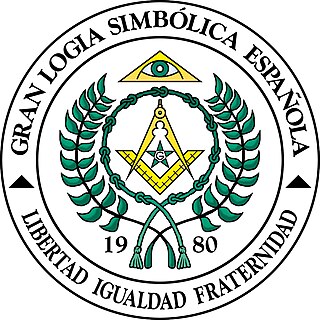
The Symbolic Grand Lodge of Spain is one of the main grand obediences in Spain. It is one of group of obediences included in CLIPSAS, and can be defined as a mixed or egalitarian, liberal and non-dogmatic Grand Lodge.